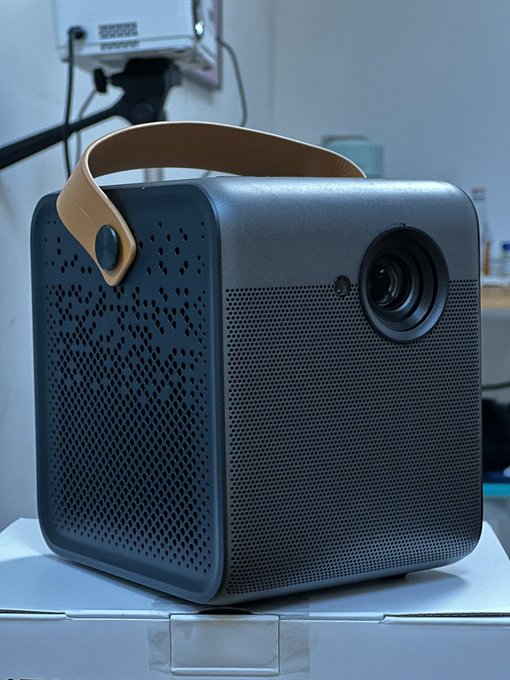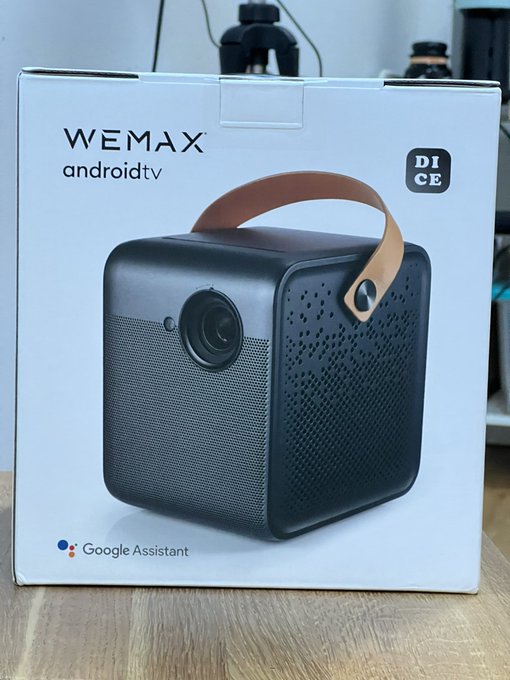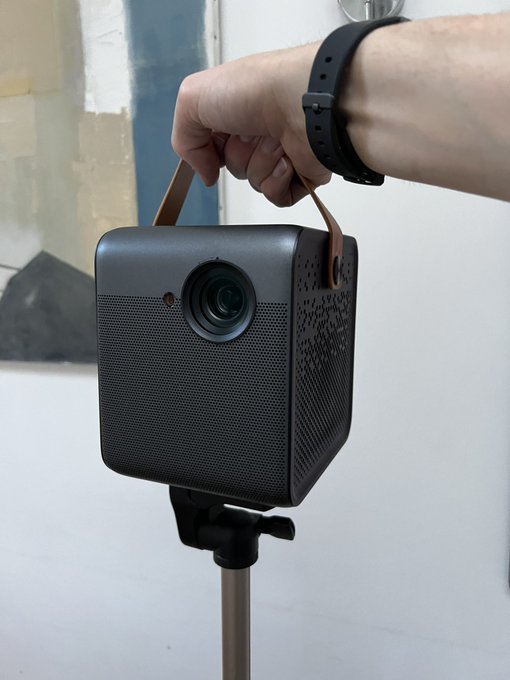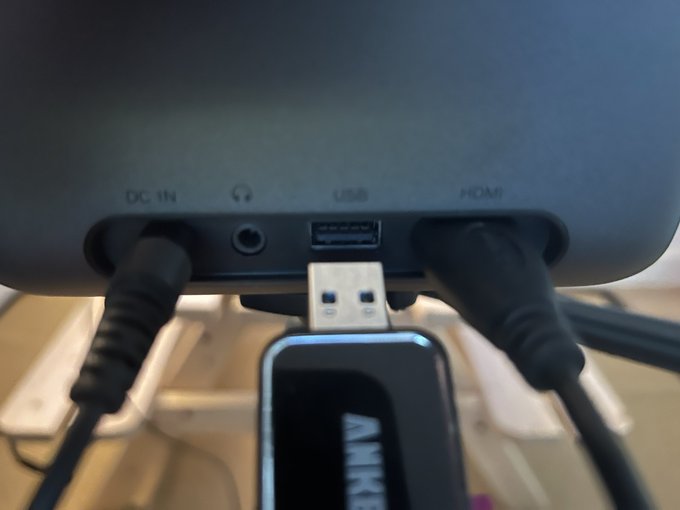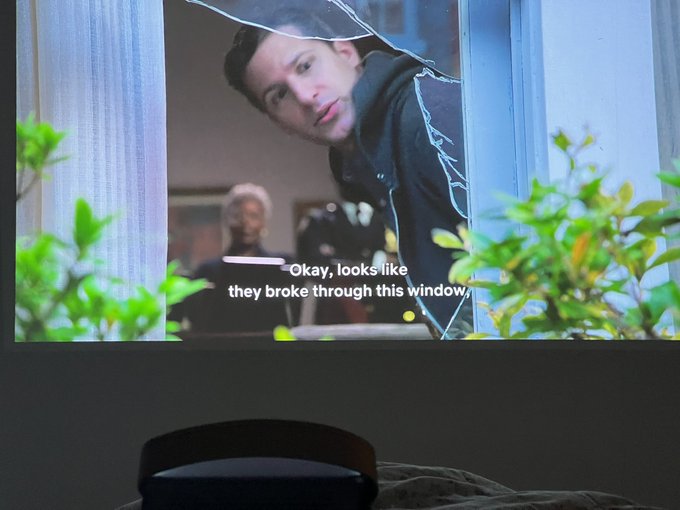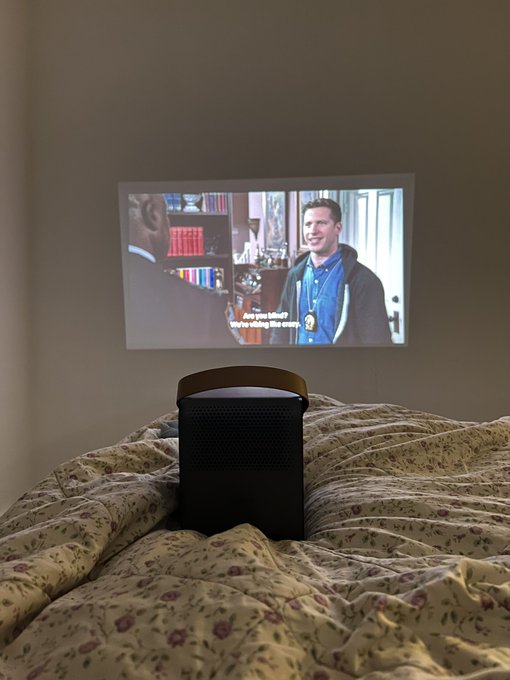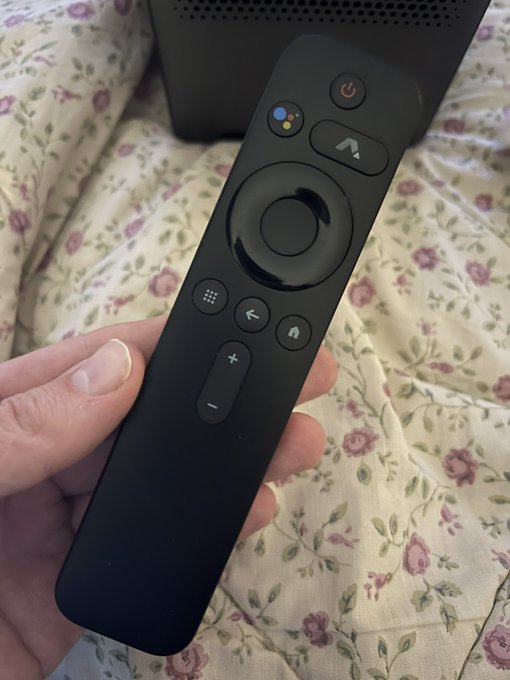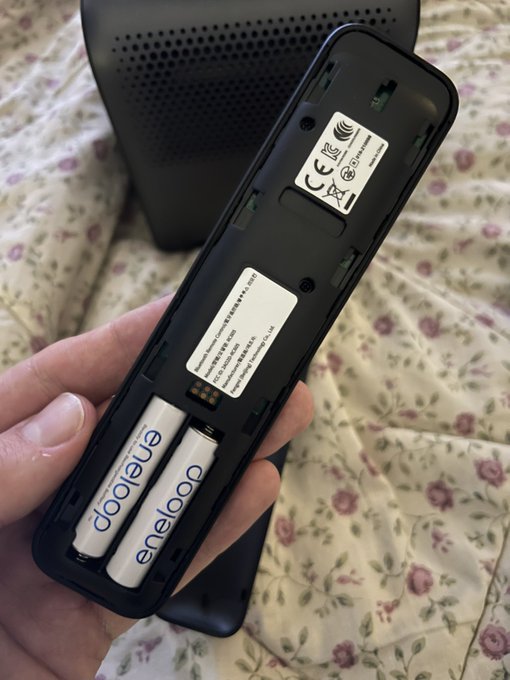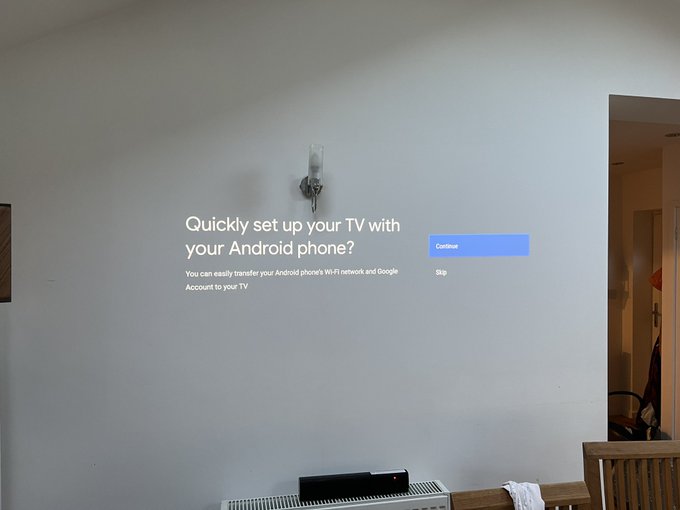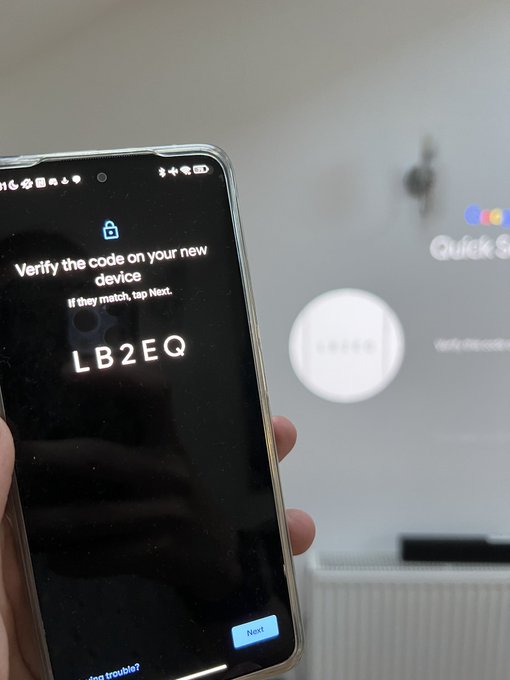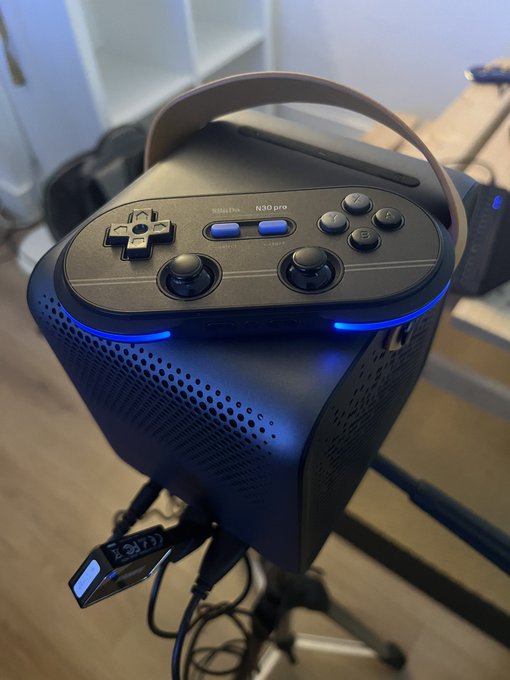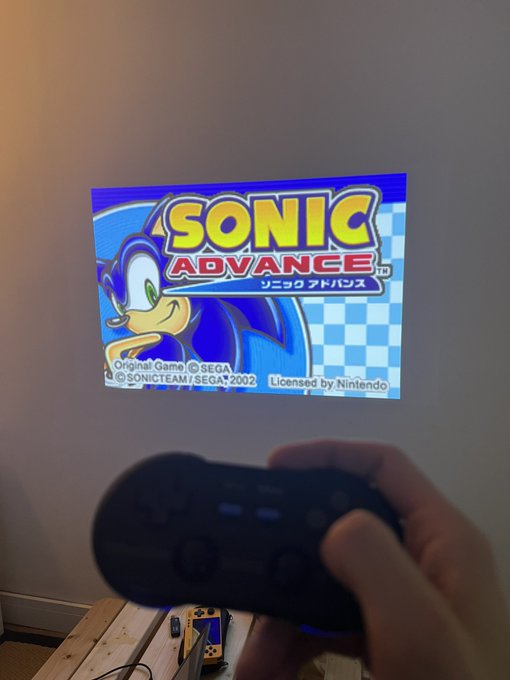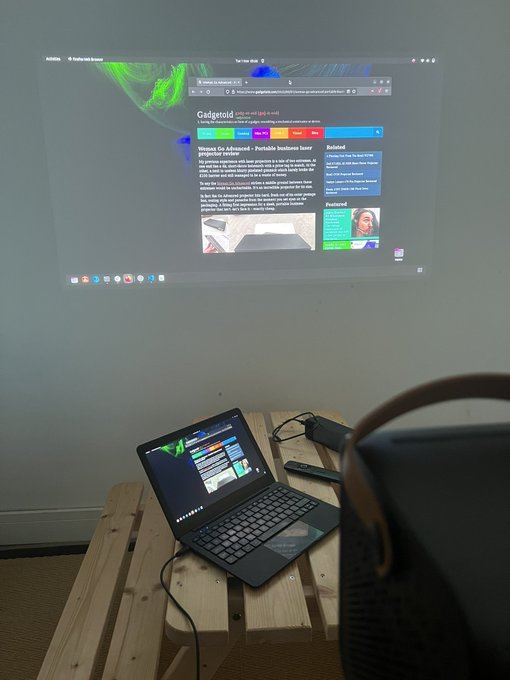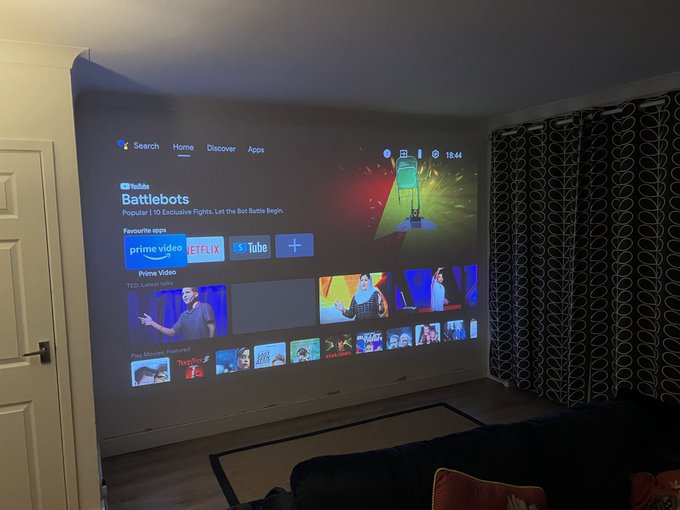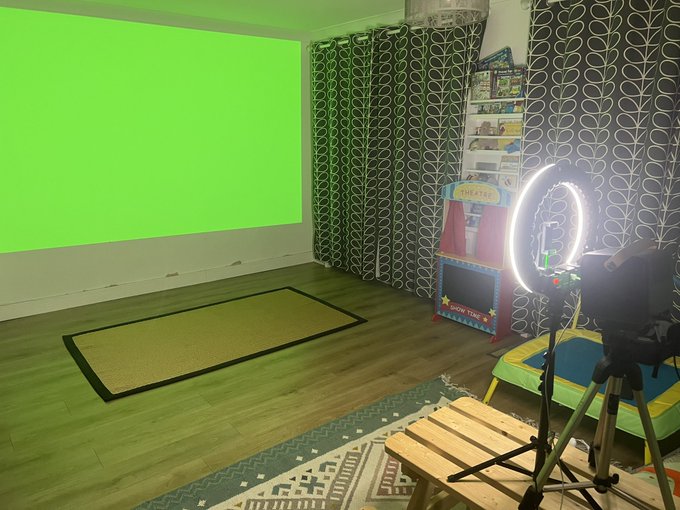Wemax Dice Portable 1080p Projector Review
The Wemax Dice is almost everything I wanted the Wemax Go Advance to be.
The chunky, cube-shaped Dice brings all the picture wrangling 4-point multi dimensional keystoning smarts I loved from the Go Advanced, swaps out FengOS for a proper Android TV install and adds great speakers and a 1 / 4” thread mount. This fixes most of the things I found lacking in the – albeit quite excellent – Go Advanced, at the cost of the extremely compact size and whisper quietness afforded by the laser optics.
Woof. Handsome fella. But what can it do? pic.twitter.com/22Ha895WL0
— Phil Howard (@Gadgetoid) October 18, 2022
Wemax Dice is a LED projector, available from Amazon for $699, aimed at the consumer market. Just like Anker’s Nebula Solar or – I dare say – their Mars II Pro, or BenQ’s GV30 or GS2 it’s intended to be easy to drop on a table indoors or out, making the most of its placement and whatever projection surface you make available.
The LED projection and dual speakers means it’s a great deal bigger and heavier than it’s business-oriented laser sibling. The fan is also noticeably louder, but not irritatingly so. These small downsides aside it’s a much better turnkey home theater projector – just stick it on a table and you’re done. No need to worry about kids running in front of the laser, no need to add extra speakers. No need to use an Apple TV or Fire TV to supply content. Plonk and go!
Let’s take a look in-depth-
In The Box
The Wemax Dice comes packed cozily with the projector, remote and power supply.
Hooooooo yet another projector.
This one looks absolutely cracking though! pic.twitter.com/dmMDrMSBJQ
— Phil Howard (@Gadgetoid) October 18, 2022
Dice uses a barrel jack AC to DC power supply, taking a C7 figure 8 connector and rated at 100-240v input, so it’s easy to swap the plug for your region. It outputs 19v at 4.74A for a total of 90.06w. A straight up USB Type-C connector would have been nice, but this kind of adapter is pretty common for USB Type-C and Thunderbolt docks so it should be easy to find a spare or replacement.
The projector itself sports a single HDMI port, a single USB port and a 3.5mm headphone jack to plug the kids in for some quiet listening. The relatively small number of ports reflects its intended use- you’re not expected to plug anything much in. It’s a grab and go projector.
Notably missing from the box, and seemingly any of the kits built around Wemax Dice, is a carry case and Wemax don’t seem to sell one either. This would have been a nice value-add since the Dice is otherwise a pretty awkward shape to throw in a backpack.”
Build Quality & Aesthetics
The look and feel of Wemax’s Dice really brings this diminutive portable projector together. It’s visually appealing and its form follows the core functions. Dice is styled around the speakers, battery and projection assembly. Its shape gives plenty of surface area at the sides for speakers and cooling vents. The vents are styled to blend in to the overall design and look more like a visual statement than a necessary evil.
The whole projector feels rock solid, as you’d expect from something portable. The design is rounded off with an appealing faux leather carry handle.
Solid thread mount in the bottom. That’s 1/2 of my issues with the Go Advanced sorted right there. pic.twitter.com/A8bJhOesx8
— Phil Howard (@Gadgetoid) October 18, 2022
There are no controls – save for power on/off – on the projector which can be a blessing if you’re wanting to avoid kids idly browsing through content (my toddler can tune into some impressive but harmless garbage if we don’t keep an eye on him) or a curse if you manage to misplace the remote. I’m a little on the fence here since the black of controls lends the projector a very clean look.
Could do with a little more clearance around the USB port ? pic.twitter.com/KZd7DwYq4X
— Phil Howard (@Gadgetoid) November 1, 2022
The HDMI port and USB A port are a little close together, making plugging in my SD card reader impossible without an extension cable. A little extra space would have been nice.
The cube shape is excellent for raising the projection lens over ruffled bedding making the Dice a great projector for sitting at the foot of the bed for some evening, lazy Brooklyn Nine Nine marathons. No need for a mini tripod.
Ha the @wemaxprojectors Dice is ace for sitting on a bed. The cube shape means the lens handily clears any bunched up bedding. No need for a tripod. pic.twitter.com/NHtkVJNMOw
— Phil Howard (@Gadgetoid) November 2, 2022
The Hardware
The Dice is built around an AMLogic SOC with a big standard 2GB RAM. It’s a four core ARM Cortex A53 with a Mail 450 GPU.
There’s a respectable 16GB storage of which 10.03GB is recognised by AIDA64 with roughly 8GB remaining for you to use.
It supports Bluetooth 4+ and 5 GHz WiFi.
At time of writing my Dice was at Android Patch Level 2022-07-05.
The Remote
The Dice remote is very similar to the Go Advanced remote. It’s sleek, and fully black this time around with the same concealed battery door that blends into the design and makes it feel very premium.
It takes two AAA batteries (which are not included), and the battery cover runs the length of the remote hiding its own fastenings – none of those nasty little springy plastic clips here.
Very slick remote with a full length battery compartment concealing all the boring details and – of course – the battery. pic.twitter.com/3pcOIYzxRX
— Phil Howard (@Gadgetoid) November 2, 2022
It’s a Bluetooth remote so it works well non-directionally- important since you’ll habitually point it at the projector screen and not the projector! This also means it supports voice input, which I’m happy to report works well in Android TV.
Auto Keystone & Auto Focus
Auto is the name of the game for Wemax’s Dice projector. It’s intended to be as simple as possible to set up, ideally requiring no manual tweaking.
Keystone is 2D, compensating for both vertical and horizontal alignment so you can throw a serviceable image from an awkward corner which helps make use of whatever surfaces and walks you have available.
You can manually reset the keystone setup and tweak it either in a quick mode – which allows you to move a single edge of the screen to skew it evenly – or advanced four point mode – which allows you to grab each corner of the screen and stretch/squash/skew until it looks correct.
I will usually manually adjust the keystone, using the ceiling and adjacent wall lines to get an image that looks square. Unfortunately you also have to eyeball the aspect ratio in manual mode, and you’re shown a circle pattern to give you some hint as to whether your result is wide of the 16:9 mark.
There’s no automatic object avoidance or tilt compensation. The latter is less useful when you’re using a hard surface to stand the projector, but I was frustrated by a cheap tripod that was near impossible to get level.
While Dice’s keystone correction is excellent you’ll get the best image by tweaking the projector placement itself, until a “reset” keystone image looks good, and then doing minimal tweaks to dial it in to a final result. Auto keystone is always a compromise, and the more you rely on it to correct extreme off-angle viewing the less picture resolution you’ll have available for your content!
That said- even with extreme keystone applied most 1080p video content looks great. It’s usually sharp lines at 90 degree angles – such as a computer desktop – that really suffer from keystone distortion.
Android TV & System
The Dice ships with a pretty much vanilla Android TV 9 which truly is the lynchpin of its excellence. The OS is basically the same as my TV which makes flipping between the two straight-forward. Since I have an Android phone handy, too, initial setup of the projector was straight-forward.
Android. We’re 2/2.
Unfortunately… no Netflix ? pic.twitter.com/tq1avqrKGN
— Phil Howard (@Gadgetoid) October 18, 2022
With Android TV 9 comes all the trimmings you’d expect from a projector aimed at a wider, consumer market- there are no awkward software warts such as the mixed English/Chinese keyboard that plagued FengOS on the Go Advanced. You’ll also find the standard Google Play store in lieu of Aptiode, though Netflix is nowhere to be found in the store. I used APK mirror and grabbed a random version of Netflix for Android TV, after which it appeared in the apps list and worked fine.
Installing AFTV New’s “Downloader” app to side load SmartTube Next was an absolute breeze.
As with any other Android TV projector you can also run a whole variety of games and emulators and you’ll find that the ExPlusAlpha retro emulators work well, too. You may – however – find the latency unacceptable. All the software magic and trickery that makes keystoning work imparts a noticeable delay in image processing that, as with pretty much every other smart projector I’ve tested, makes it unsuitable for modern gaming and just about tolerable for the more forgiving classic games. Unlike – for example – Anker’s Nebula Solar projector there’s no “Gaming Mode” to reduce the latency. However to Wemax’s credit my go-to input lag test measured about 100ms difference between my laptop display and the projector- that’s roughly 45ms faster than Anker’s Nebula when it’s in “Gaming Mode” and very, very tolerable for desktop use and moderate gaming.
Loading up some emulators, pairing a Bluetooth controller (8bitdo N30 Pro) and trying a jump test in Sonic 2 revealed slightly over 100ms press to jump latency, right in line with the HDMI input. Adjustments to keystone correction don’t seem to affect this. As a result Sonic 2 is very playable and this could be an awesome projector to bring a family together with retro games if you’re willing to go through the rigamarole of setting up emulators and finding those games.
Hell yeah! pic.twitter.com/3muD7BTfyL
— Phil Howard (@Gadgetoid) November 1, 2022
While the 8bitdo controllers worked beautifully, I had some amount of trouble pairing the Majority Bowfell Plus Bluetooth speaker and, once done, couldn’t get any audio from it- that may be a me problem and there’s no great reason to supplement the already excellent speakers of the Dice.
Beneath the Android system is a projector menu for handling things like keystoning. This has a dedicated button (which actually just runs the Launch Board app) so it’s easy enough to nip in and make corrections. You’ll also find the “Bluetooth Speaker” mode here- you can optionally turn off the projector part of the projector and use the built-in speakers for music listening.
Updates to Android 11 have been rumored on the Wemax Community but I was unable to update past 9.
Picture & Sound
It’s a 1080p LED projector so it’s not gloriously crisp or high fidelity but it is incredibly watchable in low light, which includes throughout the day during our grey British winters. Upon close inspection there’s some colour fringing around white text, and noise in dark colours- both of these disappear at even a modest viewing distance.
Hooking up a laptop and mirroring its 1080p screen resulted in a very usable setup. The low 100ms input lag means mouse control is possible without overshoot and frustration. Twitch shooters? Probably less so.
Set up to test latency on the @wemaxprojectors and it’s actually very very usable hooked up to a laptop. Not so much latency that you oversteer the mouse at least.
There’s a lot of noise/grain in the image up close that you don’t see at a normal distance. Temporal dithering? pic.twitter.com/UqDhCNTovE
— Phil Howard (@Gadgetoid) November 1, 2022
Keystone correction just distort the picture somewhat, but surprisingly most video content is pretty much unaffected by this. If you want to throw a huge screen and you’re not precious about fidelity then you just won’t notice or care.
Thanks to the ¼” thread mount the Dice can be mounted on a tripod or ceiling mounted upside down. There’s a menu option under Projector -> Projection Method that lets you flip to ceiling mount or rear projection modes.
The Most Evenly Lit Green Screen Ever
I’ve been testing the Meta Quest 2 lately. I wanted to capture myself and the videogame footage in a single shot on my phone so I could slap footage right onto Twitter without having to sit at a desk to edit footage.
Too lazy to rig up a green screen setup so here’s the @wemaxprojectors dice throwing a 100” screen so I can record what’s going on in ViRTuAL ReALity pic.twitter.com/5QTv965guz
— Phil Howard (@Gadgetoid) October 31, 2022
Unfortunately the Occulus app has been entirely uncooperative in this endeavour- refusing to enable its split view functions and constantly losing my recorded footage.
Since the Wemax Dice is a regular Android projector I was able to use the Oculus/Meta app to cast a video feed directly from the Quest 2 and project it on my wall. I could then capture both myself and the videogame feed in a single take and share clips of it instantly.
The trouble with this setup was latency. Not only does the projector have an input delay of roughly 100ms, but streaming video from the Quest 2 also has a quite significant delay. Combined these completely break the sync between the game music and video, and my actions making the resulting footage unintelligible.
The setup.
I wonder if Quest will go apeshit in this whacky lighting… pic.twitter.com/gBIObrJaIR
— Phil Howard (@Gadgetoid) October 31, 2022
I resorted to recording video of myself from my phone and the Quest 2 capture separately in-headset. To mix the two I needed a green screen setup. I don’t have a green screen, I don’t have lights to light it, and I don’t have much patience. I figured the Wemax Dice could just project the most evenly lit green screen directly onto my wall. And, you know what? It worked! The results weren’t perfect since I was stood between the projector and wall and this also cast with a slight green that caused me to be semi-transparent in my final edit. The results were good enough, however. I’m actually quite interested to see how this might work with a short-throw laser projector if I can lay my hands on another one.
I guess since green screens need to be evenly lit, what better way to make a green screen than out of light?
Overall
Wemax’s Dice is a hair short of perfection, a little extra space around the USB port, a newer Android TV version and a carry case to keep the beautiful but plastic exterior protected during transport would be great additions. Similarly a switch from a barrel jack power supply to USB Type-C would be great for compatibility with portable batteries and aftermarket chargers.
Sheesh it’s a looker! pic.twitter.com/SHut3IOuVr
— Phil Howard (@Gadgetoid) October 18, 2022
If I’m moving into wishful thinking territory then the object avoidance and tilt correction from the Go Advance would be appreciated.
I’d take a microSD card slot, too, for a more permanent storage upgrade path.
But as presented the Wemax Dice is quite easily the best portable projector I’ve tested to date and easily one of the best entry-level projectors outright.
Current status… pic.twitter.com/kA9Y9L7Jcb
— Phil Howard (@Gadgetoid) October 30, 2022
Oh and did I mention it has a battery, too? It’ll run you for maybe three hours and double up as a portable phone charger in a pinch.
